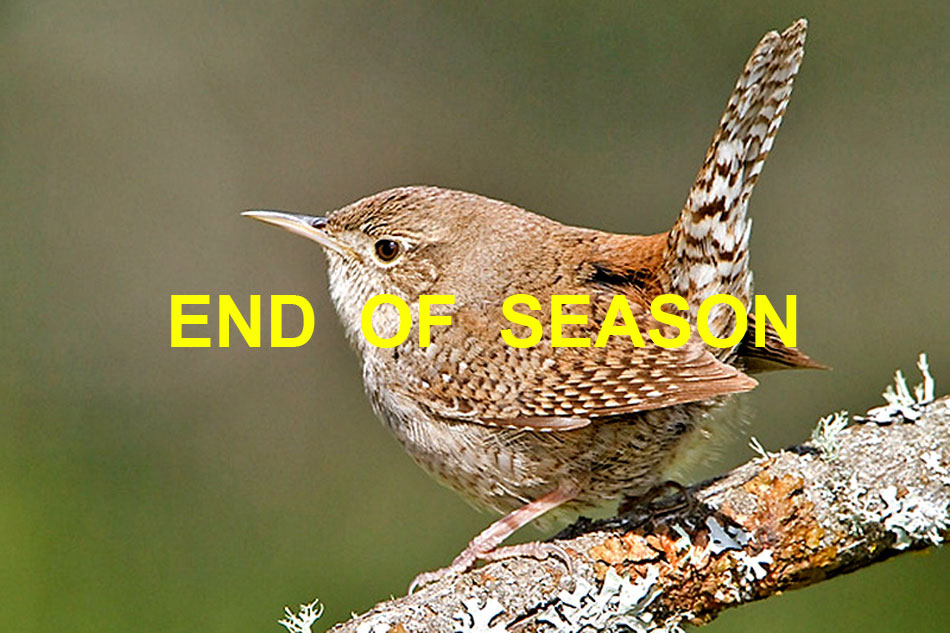More info: The house wren is a very small plain brown bird with a rich song and is very active and inquisitive. They have a tendency to nest around human housing and birdhouses and are common in towns and gardens. House wrens are cavity nesters and as such are easily attracted to birdhouses.
The house wren is found in various forms from central Canada to southern south America.
The house wren is a fierce competitor when it comes to nest sites. They will harass and peck at much larger birds and even drag eggs and young out of a nest site they want to use. As the season progresses, house wren nests can become infested with mites and other parasites which feed on the wren nestlings. Perhaps in order to fight this problem, wrens often add spider egg sacs into the nesting materials. In lab studies, once the spiders hatched, they helped the wrens by devouring the nest parasites.
The breeding season for House Wrens runs from March to July. Wrens will attempt having two broods per season with the second nesting around late June and in to July. House wrens generally lay 6 to 7 eggs, sometimes 5 to 8 with incubation lasting 12 to 15 days.
House wrens leaving their nest:


